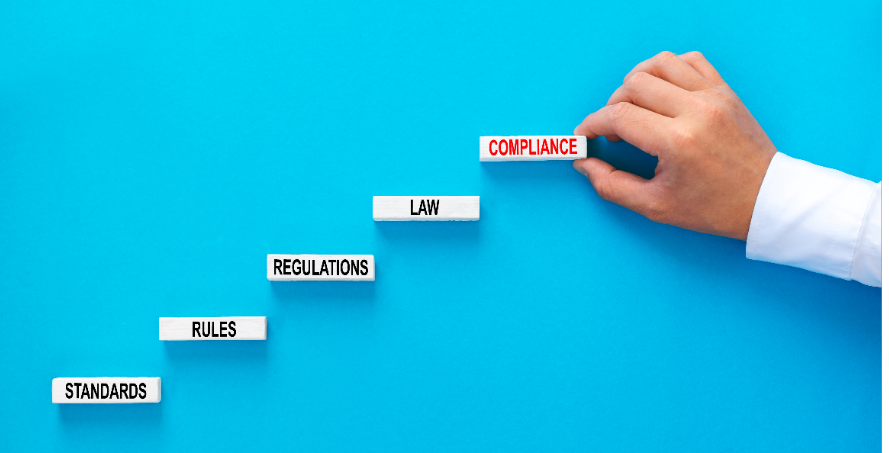Choose another country or region to see content specific to your location
Compliance Automation – the business case for investment
June 03, 2021

In the last financial year, RBI has slapped steep fines across a number of Indian and foreign banks for non-compliance.
The size of the IT industry in just France and Germany is estimated to be in excess of 150 billion USD. To do business in Europe, the Indian IT industry needs to comply with the GDPR. The penalty for non-compliance is whopping enough to cripple a company.
While the rule book on corporate governance and regulatory adherence gets bigger and fatter, compliance management continues to be a challenge.
What are the steps that need to be done that can enable Indian businesses to comply with the voluminous rigour and demands of our regulatory authorities?
Compliance automation is one of the solutions that would play a key role in helping companies comply. Automation comes with a string of benefits too.
Why does the Indian business entity need automation?
The use of technology, in the context of regulatory monitoring, reporting, and compliance helps more than just adhering to norms and regulations. The benefits are obvious.
• It allows companies to adapt to the pressure of increasing regulatory
requirements with flexibility and ease.
• SaaS and cloud-based, it is cost-effective and very secure.
• It automates the process of monitoring and collating data. It simplifies
reporting processes to the regulatory bodies.
• Very importantly, the reporting can be done in real-time through data
analytics.
A large segment of Indian industry still clings to cumbersome manual processes. This is also coupled with legacy infrastructure. From a compliance perspective, automation plugs the gaps to manage complex and growing regulatory challenges since many companies may no longer be positioned to address these demands in their current framework.
In a webinar conducted by Quant LegalTech and CFO-India a couple of months ago, 58% of attendees mentioned that their companies had adopted to some degree of automation along with manual processes while a sizeable amount had yet to introduce automation.
It’s Advantage Automation
Industries today have a lot to gain from multiple tech-based options available to manage compliance. The list of regulatory obligations that they have to comply with is only growing. The consequences of non-compliance and the subsequent penalties are intense and can create unnecessary setbacks.
Automation offers accuracy and efficiency and most importantly, ease of usage. As a SaaS-based offering, it is competitive and scalable based on requirements.
The companies that adopt automation are not the only ones to derive an
advantage. For processes that need customer interaction and data, the customer experience can also be greatly enhanced.
Companies that incorporate technologies to protect and secure their systems and processes, in turn also protect their customers to a large extent.
How can automation transform the regulatory scenario in India?
Another finding at the webinar organized by CFO-India and Quant LegalTech was that data management was the biggest challenge facing compliance management today. A large majority quoted that the pandemic-induced remote working environment had also affected compliance filings. It is now a matter of months before the markets in India thrive and investments rise.
The immediate focus for automation should be on compliance and fraud
prevention. Consequences to being non-compliant, in terms of monetary loss, damaged reputation is severe. The implementation of regulatory technologies can manage risk and overall operations more effectively.
Compliance automation partners rely on a combination of key technologies
Most are cloud-based and employ multiple technologies and algorithms to fulfill vast obligations across diverse regulatory bodies. Machine learning and data analytics along with RPA would be used by most partners in a matter of time.
The current environment is favourable towards automation
The changing working environment and pattern has seen a rise in the adoption of compliance software compared to a couple of years ago. At a global level, the complete compliance automation software market is expected to grow from 5 billion USD in 2019 to nearly 28 bn USD in 2027. The adoption will be strongest where the industry has been supported by legislative initiatives that punish non-compliance with steep fines and criminal sanctions.
An investment in automation pays dividends in more ways than one. It provides a lot of simplicity in how history can be recited. It sets a context of consistency in how data is gathered and presented for auditing. The variability of data from multiple audits also gets reduced. It also introduces levels of transparency with the system. Automation also introduces a culture of compliance discipline. Do we really need an audit altogether?
That’s a dream one to work towards.
The author Dhruv Nagarkatti is CEO at Quant LegalTech. To know more on how compliance automation can offer companies greater efficiencies as well as reduced costs, login for a webinar on June 4, 2021 at 4.00 pm. Click here to register: https://www.amaindia.org/ama-events-programmes/compliance-future-of-automation-june-2021/